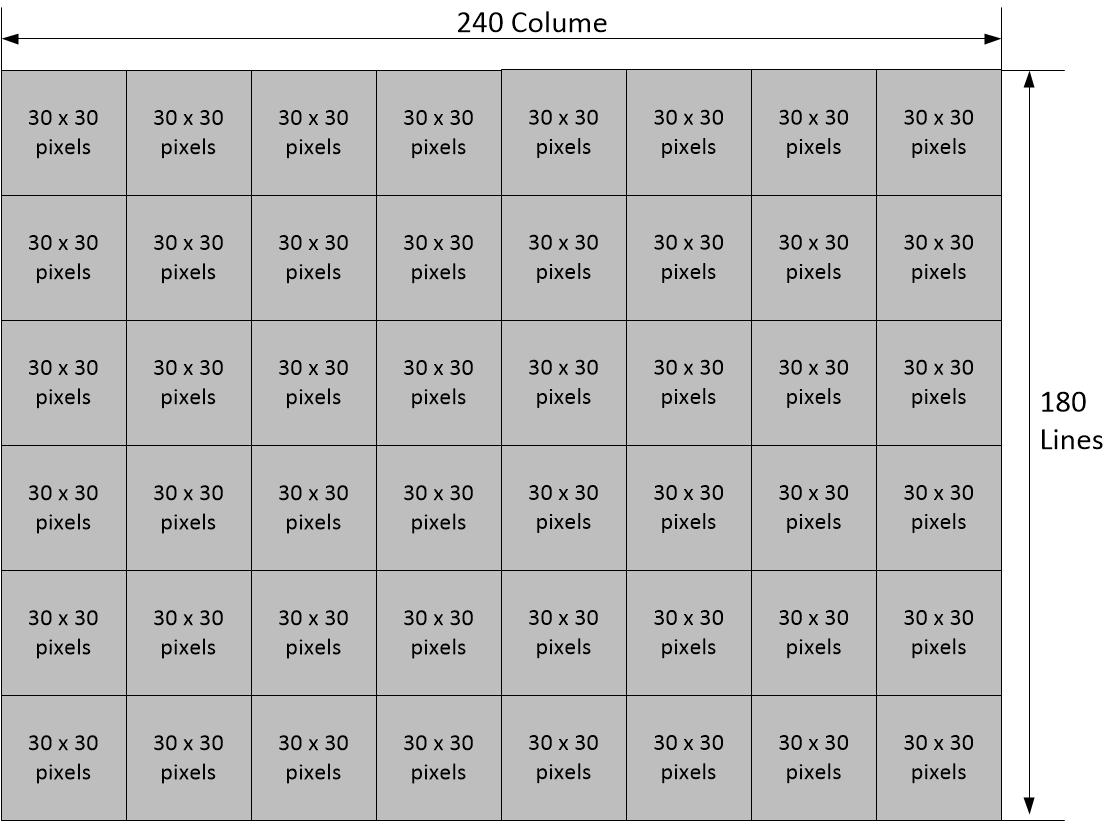SLVSEJ1A February 2021 – May 2022 TLC6983
PRODUCTION DATA
- 1 Features
- 2 Applications
- 3 Description
- 4 Revision History
- 5 Description (continued)
- 6 Pin Configuration and Functions
- 7 Specifications
-
8 Detailed Description
- 8.1 Overview
- 8.2 Functional Block Diagram
- 8.3
Feature Description
- 8.3.1 Independent and Stackable Mode
- 8.3.2 Current Setting
- 8.3.3 Frequency Multiplier
- 8.3.4 Line Transitioning Sequence
- 8.3.5 Protections and Diagnostics
- 8.4 Device Functional Modes
- 8.5 Continuous Clock Series Interface
- 8.6 PWM Grayscale Control
- 8.7 Register Maps
- 9 Application and Implementation
- 10Power Supply Recommendations
- 11Layout
- 12Device and Documentation Support
- 13Mechanical, Packaging, and Orderable Information
Package Options
Mechanical Data (Package|Pins)
Thermal pad, mechanical data (Package|Pins)
Orderable Information
9.2.1.1 System Structure
To build an LED display module with 240 × 180 pixels, 96 TLC6983s are required.
 Figure 9-2 LED Display Module
Figure 9-2 LED Display ModuleAs shown in Figure 9-2, the total module can be divided into 48 30 × 30 matrix. Each matrix includes two devices with stackable connection.
Note:
To achieve the best performance, TI suggests to distribute the redundant channels and lines to each 32 × 32 matrix. For this case, two Red/Green/Blue channels and two lines are not used in each matrix, and these unused pins can be floated. For the software, TI suggest zero data to send to the unused channels. There is no need to send the zero data to unused lines.